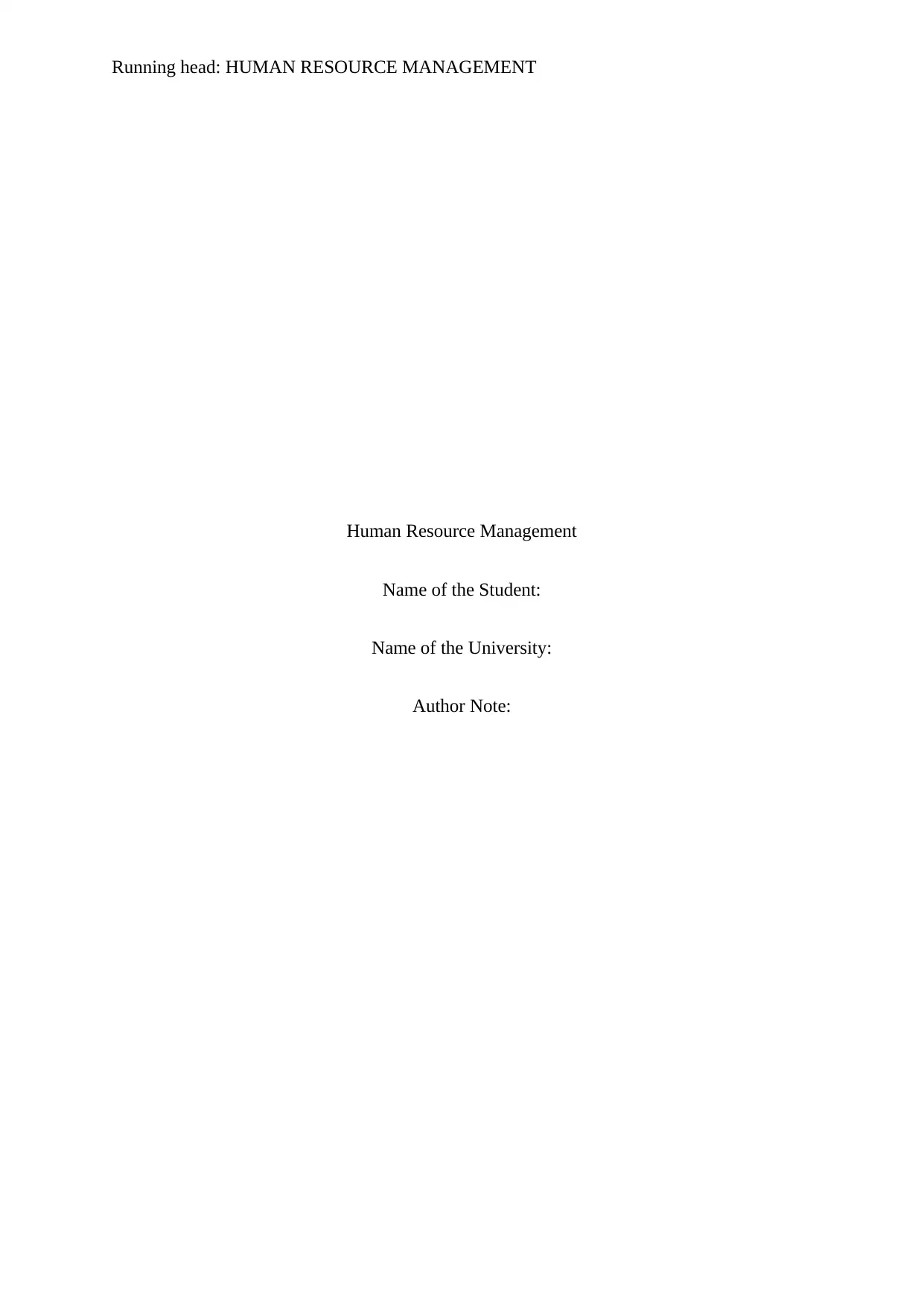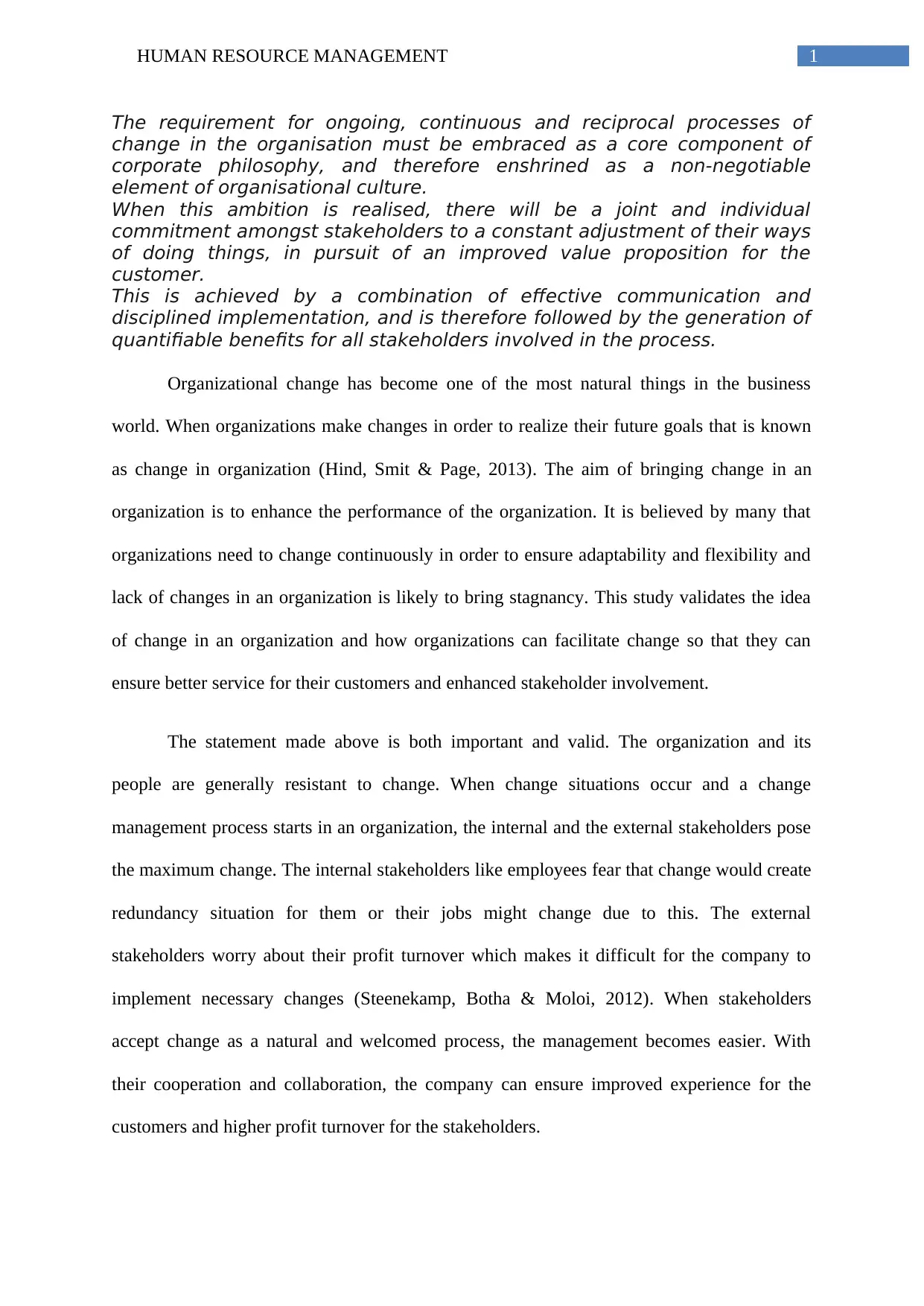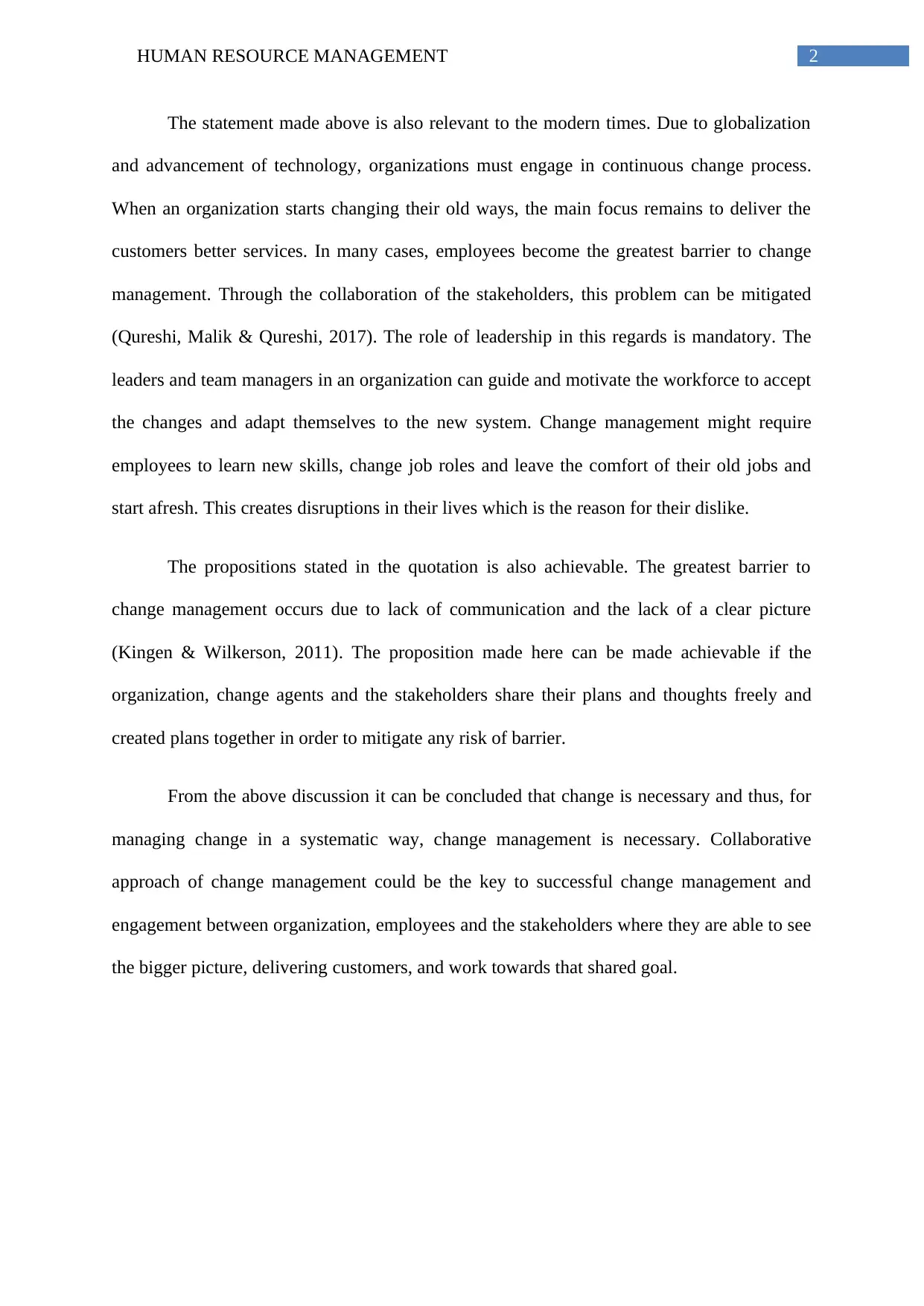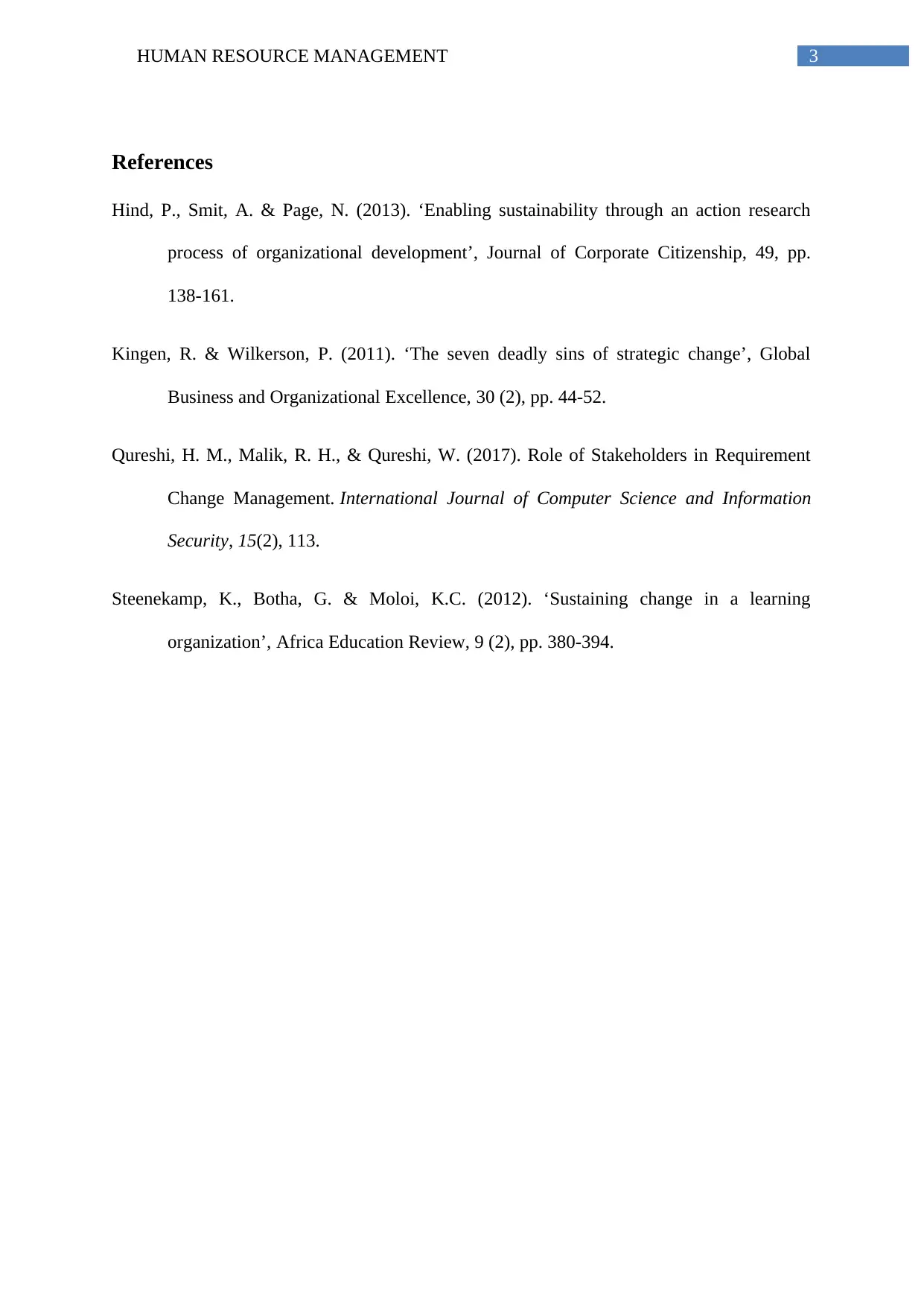University HRM: Key Concept Exercise on Change Management
VerifiedAdded on 2022/09/10
|4
|850
|65
Report
AI Summary
This report examines the concept of change management within the context of Human Resource Management (HRM), addressing the need for continuous organizational adaptation and the importance of stakeholder involvement. The report validates the significance of change in organizations to ensure flexibility, customer service, and stakeholder engagement. It highlights the resistance to change from both internal and external stakeholders and emphasizes the role of effective communication and leadership in mitigating these challenges. The report also discusses the relevance of change management in the modern, globalized business environment, particularly due to technological advancements, and underscores the need for collaborative approaches involving organizations, employees, and stakeholders to achieve shared goals. The conclusion stresses the necessity of change management for systematic implementation and the importance of a collaborative approach to ensure successful change management.
1 out of 4











![[object Object]](/_next/static/media/star-bottom.7253800d.svg)